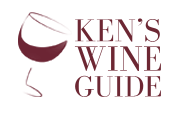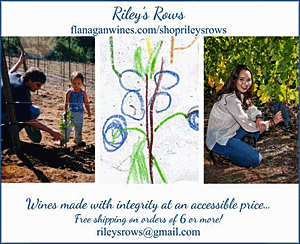Wine Tasting Tips
KensWineGuide.com Wine Tasting Tips
There are 3 major components to wine tasting:
- Appearance/Color
- Bouquet/Aroma
- Tasting
Next and perhaps the most important part of wine tasting is the bouquet and aroma of a wine. Humans can sense hundreds of aromas through smelling. Tasting a wine only allows for 4 different types of tastes. Bouquets can provide more distinctive differentiating qualities of a wine than taste. The aroma wheel (used by many wine experts) lists the following as the primary aromas to describe wine.
- Fruity
- Vegetative
- Nutty
- Caramelized
- Woody
- Earthy
- Chemical
- Pungent
- Oxidized
- Microbiological
- Floral
- Spicy
In order to get the true bouquet of a wine, the taster should begin by swirling the wine in their glass. The taster should be using a big bowled glass to allow for swirling and to allow for the taster to be able to put their nose right in the glass after swirling the wine. To properly swirl the wine, the taster should place the glass flat on the table. Hold it by the stem and rotate it in a controlled circle swirling the wine. This will aerate the wine. Then it is time to take a big sniff. Put your nose right into the glass. I frequently suggest doing it a couple of times before you move on to tasting. Experts frequently refer to the smell or bouquet of the wine as "its nose." Enjoy this aspect of tasting. Take notes on what you smell before you move on to tasting the wine. Capture the moment of the bouquet. If the wine is inviting based upon its bouquet, the pleasure of its taste will only be enhanced.
To taste the wine, take a medium sip of it. People can detect 4 basic tastes. They are sweetness, sourness, bitterness, and saltiness. Most wines have flavors of the first three and are generally not salty. Once in your mouth, the taster should swirl the wine around so that it coats the front, back, and side of their tongue. This is when professional tasters refer to the wine on their palate. This allows you to sense the various flavors of the wine. Some professionals tend to carefully draw in some air as they are tasting the wine. This is again for aeration of the wine. Once you have had the wine in your mouth for a few seconds and have taken your notes on the flavors, you may swallow or spit the wine out.
When tasting the wine there are many descriptors you might experience. But each of these will fall into 3 basic categories. Again, they are one of the following:
Sweetness
- Sweetness is the opposite of dry.
- Off-dry is in the middle. It has a touch of sweetness.
- Sweet is sweet. It just depends on how much sugar is in the wine.
Acidity
- White wines are generally more acidic than red wines.
- Acidity is often an indicator of dryness.
- Acidity is indicative of the level of crispness.
- Non acidic wines are fat or flabby.
Tannin
- Tannin comes from the skins, the seeds, and the stems of the grapes.
- It causes the drying out feeling in your mouth at the end of the taste and in the finish.
- Too much tannin sometimes causes a bitter taste.
Describing the flavors of wine can vary from taster to taster. What really matters are the flavors that you taste and enjoy. You should note the flavors you like in the wine and those that you don’t. These would be good things to know so you could inform a sommelier or wine manager of what you like and don’t like in a wine. This way they could help you make a good choice when purchasing a wine you are not familiar with.
When tasting a wine the taster can sometimes feel the weight of the wine in their mouth. This weight or body of the wine is another descriptor used in wine tasting. Wines usually have 3 primary descriptors for weight. A wine could be light or thin. A light bodied wine is said to have the consistency of skim milk. A wine could be medium bodied and have the consistency of whole milk. Finally, a wine could be full bodied and have the consistency of half and half.
The feel of the wine is a little different than weight. Feel could be described as soft, smooth, and silky on one extreme and of course, harsh, rustic, and heavy at the other extreme.
We at KensWineGuide.com believe that balance is one of the most important qualities of a wine. When tasting a wine that is in balance, the wine has nothing that is excessive or deficient. Wines can be balanced if their fruit, acidity, tannin, and alcohol are integrated so that no one element dominates. A balanced wine has proper and harmonious proportions throughout.
The last component of wine tasting is the finish. After you have swallowed the wine, you will experience the wine’s finish. Finish is the impression that a wine leaves in your mouth after you have swallowed it. Some finishes are short. Some are long. Many tasters refer to the length of a wine. That is the length of the finish. It is said in many circles and I agree, that the longer the finish, the better the quality of the wine. A great wine, as opposed to a good wine, always has a pronounced, very long, lingering, well balanced finish.
Now that you have tasted the wine, how do you determine what is a perfect bottle of wine?
KensWineGuide.com believes a perfect bottle of wine is when everything is right for you. That is a wine that is the best of the best in your opinion. All the elements of the wine fit the situation and make it even better whether it is matching with food or setting the right moment. A wine that tastes great, has great balance, has a lengthy finish, and you want to brag about it, is a perfect wine. A couple of wine makers I recently met with told me their perfect wine is one that when the taster enjoys one glass of the wine and then upon completing it wants another glass. The perfect wine for you is what makes the magic happen for you. We at KensWineGuide.com hope that these tips help you find the perfect bottle of wine for you.




